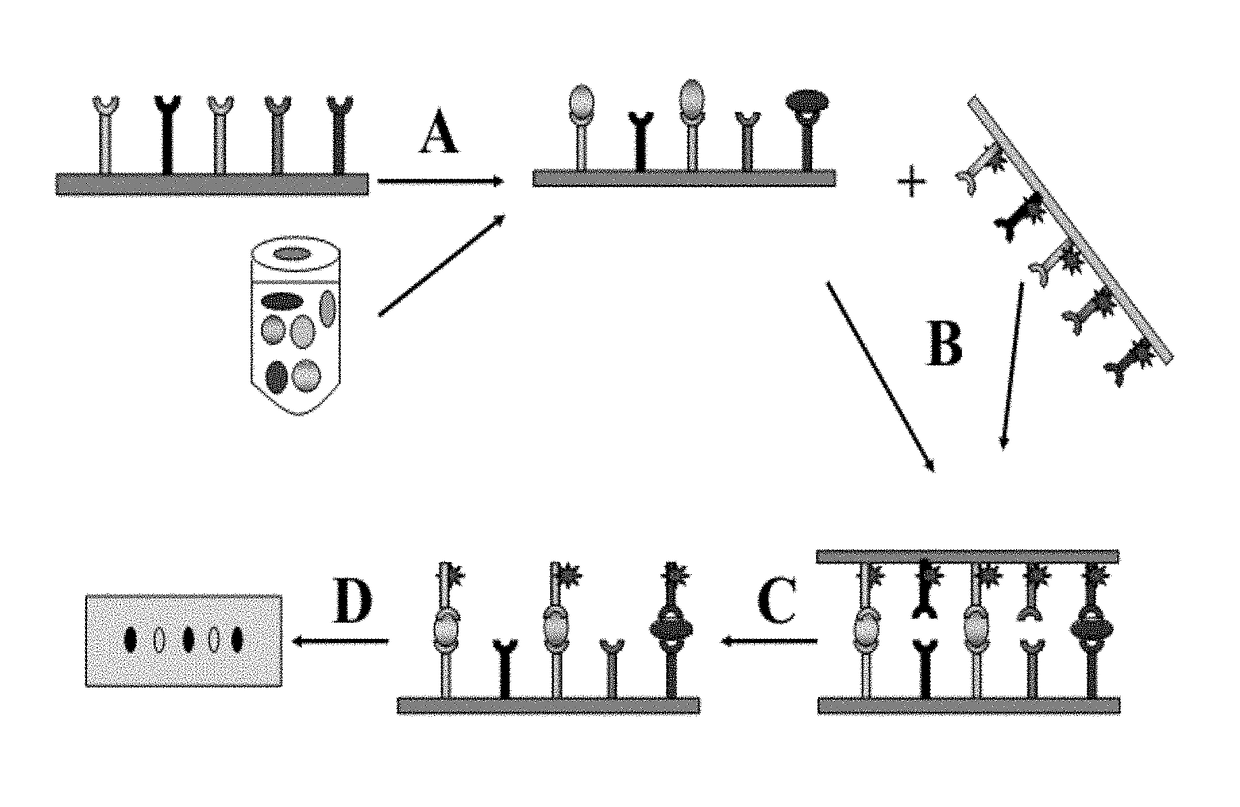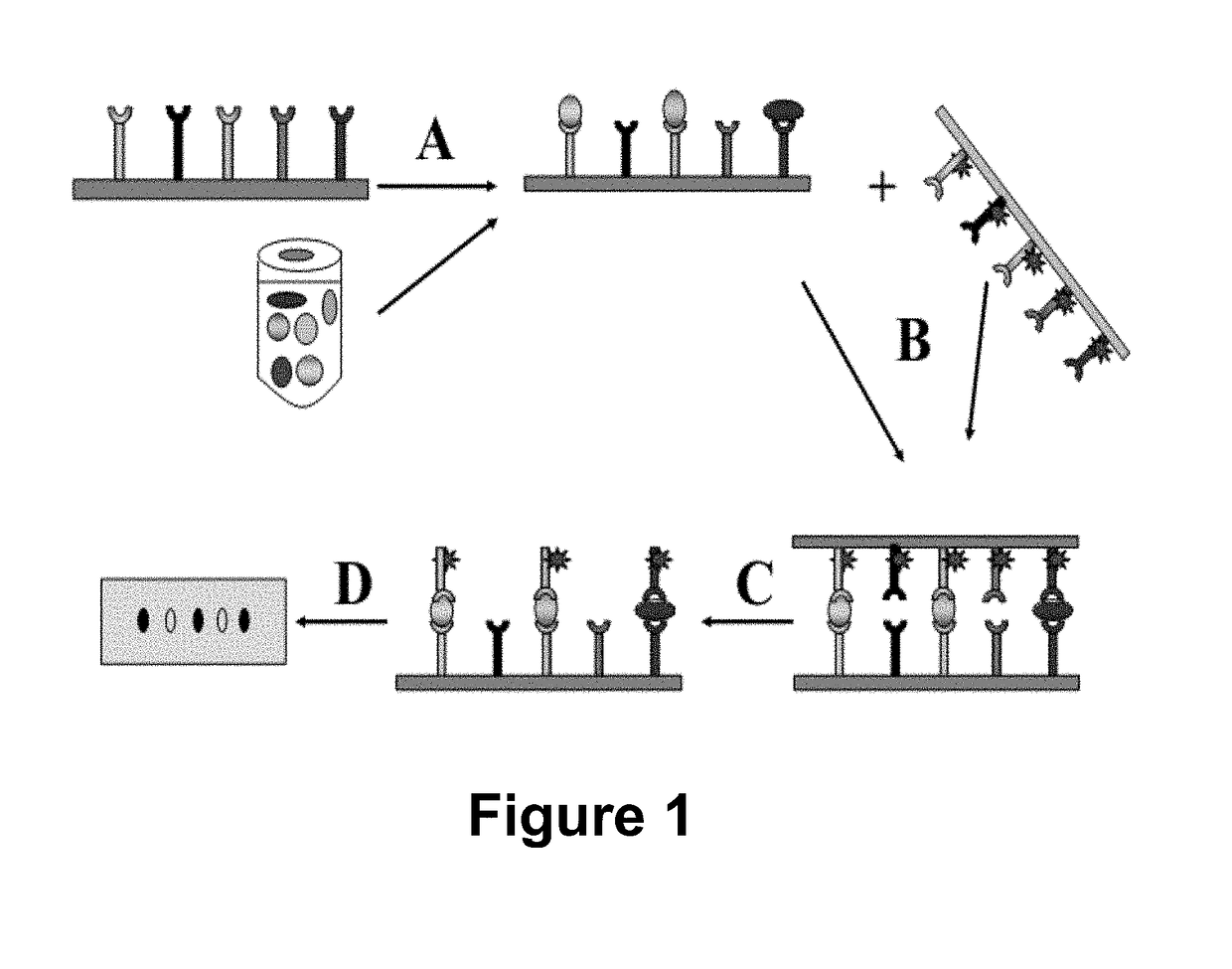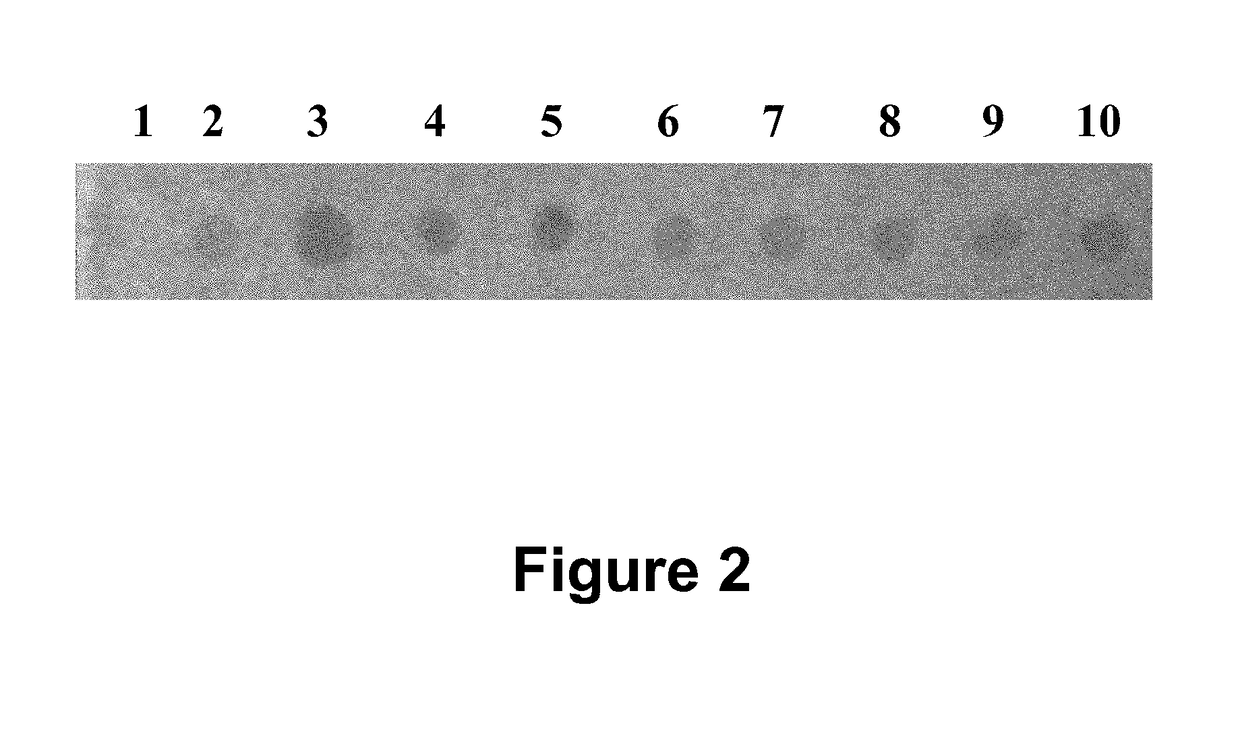Method for high-throughput protein detection with two antibody microarrays
a protein detection and antibody technology, applied in the field of detecting a plurality of ligands, can solve the problems of being unable to identify individual phosphorylated proteins, being extremely difficult to achieve, and only applicable, so as to improve the quality of protein detection assays
- Summary
- Abstract
- Description
- Claims
- Application Information
AI Technical Summary
Benefits of technology
Problems solved by technology
Method used
Image
Examples
example 1
[0066]In this example (FIG. 2) a cell lysate prepared from 293T human cells was immobilized at 10 spots on a nitrocellulose membrane to form a ligand array. About 2 micrograms of protein lysate was immobilized at each spot. 10 different rabbit polyclonal antibodies against 10 different cellular proteins were immobilized on a nylon membrane to form a dissociable antibody array. After blocking, the dissociable antibody array was laid on top of the ligand array to make contact. After 60 minutes incubation during which time antibodies bound to their respective antigens, the dissociable antibody array was removed from the ligand array. The ligand-bound antibodies stayed on the ligand array. Any non-specific binding antibodies were washed off; and the rabbit antibodies were detected with HRP-conjugated goat-anti-rabbit secondary antibodies. In this example, TMB was used as HRP substrate.
example 2
[0067]In this example, unconjugated secondary antibodies were used to capture serum IgG while HRP-conjugated secondary antibodies were used as the detection / dissociable antibodies. Goat-anti-mouse and goat-anti-rabbit IgG(Fc) antibodies were spotted on a silane-coated glass slide and covalently immobilized on it to produce the capture antibody microarray. To make a dissociable antibody microarray, HRP-conjugated goat-anti-mouse or goat-anti-rabbit IgG [F(ab′)2] antibodies were spotted on a nylon membrane with a glass slide as backing. About 80 nl antibody solutions were deposited at each spot 2 mm apart; each antibody was spotted in duplicate. The capture and detection antibodies recognize different epitopes (Fc and F(ab′)2, respectively) of the IgG ligand. Mouse serum (1:1000 dilution) was used as target ligand. HRP substrate Tetramethylbenzidine Dihydro-chloride was used to visualize the bound HRP-conjugated detection antibody. As shown in FIG. 3A, signals were detected at the pos...
example 3
[0069]In this example, two antibody arrays were prepared and used to detect proteins according to the method disclosed here. Antibodies from commercial sources (about 0.2 μg / μl) were arrayed on membranes using a robotic arrayer to make both capture and dissociable antibody arrays. Nitrocelluose membrane was used as capture antibody array support; and nylon membrane was used as dissociable antibody array support. All antibodies on the capture antibody array are from rabbit; and all antibodies on the dissociable antibody array are from mouse. Decreasing amounts of antibodies were immobilized in each row on the capture antibody arrays. Rows 1 and 3 are antibodies against Connexin43 protein, and rows 2 and 4 are antibodies against GST protein. Same amount of antibodies (40 ng) were immobilized in each row on dissociable antibody array. Antibodies were immobilized by non-covalent bonds between nylon / nitrocelluose membranes and the antibodies. Antibody arrays were either used immediately ...
PUM
| Property | Measurement | Unit |
|---|---|---|
| thickness | aaaaa | aaaaa |
| covalent | aaaaa | aaaaa |
| shape | aaaaa | aaaaa |
Abstract
Description
Claims
Application Information
 Login to View More
Login to View More - R&D
- Intellectual Property
- Life Sciences
- Materials
- Tech Scout
- Unparalleled Data Quality
- Higher Quality Content
- 60% Fewer Hallucinations
Browse by: Latest US Patents, China's latest patents, Technical Efficacy Thesaurus, Application Domain, Technology Topic, Popular Technical Reports.
© 2025 PatSnap. All rights reserved.Legal|Privacy policy|Modern Slavery Act Transparency Statement|Sitemap|About US| Contact US: help@patsnap.com



